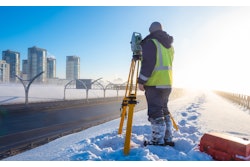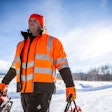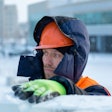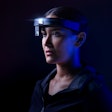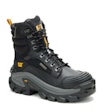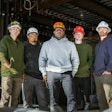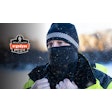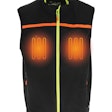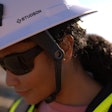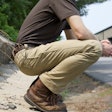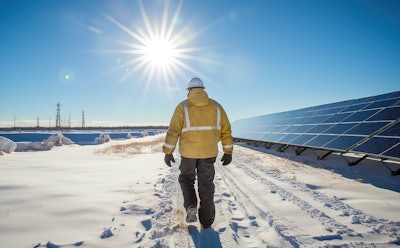
According to the Cleveland Clinic, snow blindness is a form of photokeratitis, which is a temporary, painful eye damage from exposure to ultraviolet (UV) light such as sunlight or reflected sunlight that can occur when snow and ice reflect UV rays.
Snow and ice can lead to intense glare, especially in sunny conditions on the work site. Snow’s reflective nature increases the amount of light entering the eyes, a driving factor to discomfort and damage.
It also can occur from a welder’s flash and other sources.
Photokeratitis 101
Photokeratitis is akin to sunburn, but instead it affects generally both eyes. Exposure to UV rays can cause damage to both the cornea and conjunctiva of the eye. Photokeratitis can be acute or chronic. The acute type is temporary and occurs after a short exposure to higher levels of UV light. The chronic type is less common and happens after exposure to lower levels of UV light over time.
UV-A and UV-B rays from the sun can cause short- and long-term eye damage and affect vision. Those with photokeratitis may experience one or more of the following symptoms: eye pain or redness; tearing/watery eyes; blurry vision; swelling; light sensitivity and a gritty sensation in the eyes.
Other symptoms include seeing halos, headaches, eyelid twitching and in rare cases, temporary vision loss and color changes in vision.
A construction worker experiencing these symptoms should immediately go indoors and stay in a darkened room. Contact lenses should be removed. Avoid rubbing the eyes. Treatments may include cold compresses, over-the-counter pain relief, placing a cold washcloth over closed eyes, resting and using artificial tears.
Symptoms may last from six to 24 hours, but usually disappear within 48 hours. Symptoms can be more severe the longer one is exposed to UV light.
Photokeratitis is diagnosed by an eye care specialist. An ophthalmologist can determine the severity of any eye damage. If medical treatment is necessary, a doctor may prescribe eye drops to prevent infection. A construction worker should seek medical attention in the event of a loss of vision or pain that lasts for more than two days.
Long-term exposure to even small amounts of UV radiation can increase the risk of developing a cataract or macular degeneration. Long-term UV exposure also can cause tissue elevations on the eye’s surface called pingueculae and pterygia.
Proper Eye Protection
The American Academy of Ophthalmology recommends winter eye protection by wearing goggles or sunglasses with UV protection when working outside on winter days. Proper eyewear with tinted or polarized lenses helps reduce glare, improve visibility and prevent eye strain. Using sunglasses consistently when working outdoors can limit potential eye problems.
Some eyewear has anti-reflective coating designed to help minimize reflections and glare on the inside surface of the lenses, leading to visual clarity and comfort when working in bright, snowy conditions.
Snow goggles can provide better coverage than regular sunglasses with their larger frames and snug fit. They serve not only to reduce glare but also can protect eyes from wind, snow,and other elements. Sunglasses should be worn to reduce exposure to UV rays. According to research, sunglasses or snow goggles block or absorb 99 to 100 percent of UV rays for those who spend time outdoors.
Dark lenses do not necessarily provide the best protection. In choosing the best pair of sunglasses for the job, look for a label that indicates UV 400 or 100 percent UV protection. The optimal choice may be wrap-around sunglasses or those with side panels to block all harmful UV rays. Glare from the snow can cause burns to the eyes even on a cloudy or overcast day.
UV protection can degrade over time; consult an eye care professional to get eyewear tested.
Other measures include wearing a wide-brimmed hat or visor when outdoors; using proper eye protective equipment if exposed to UV radiation on the job; wearing UV-absorbing contact lenses if working in sunny environments, taking frequent breaks during long exposure to UV rays and seeing an eye care specialist at least once a year for a complete eye exam.
When choosing eyewear for winter work, check with the jobsite’s safety manager to ensure it also meets ANSI/ISEA Z87.1-2020, the current safety standard for safety glasses.

